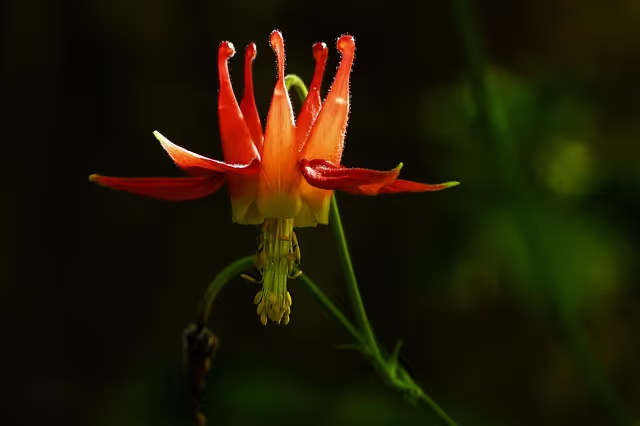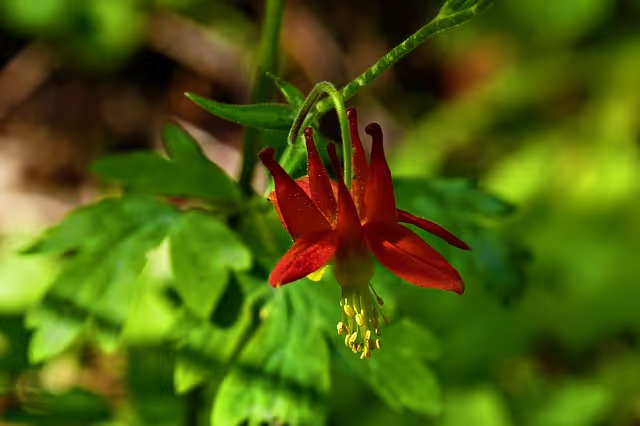The Dazzling Western Columbine


If you want to bring hummingbirds, butterflies, and a splash of bright color into your garden, then the plant we're going to be looking at today may be just the one you need. Feast your eyes upon the dazzling Western Columbine!

The Western Columbine is an open-branched plant. It has flowers that are two inches (five centimeters) in size with golden stamens and straight spurs. The flowers will brighten up your garden with their yellow and crimson red blooms every year from May until August. While it is too late to plant it and get blooms this year, next month (September) is one of the best times of the year to plant it. If you do, you should get blooms next spring. The beautiful hummingbirds and butterflies that the flowers will attract will make the wait well worth it!

The Western Columbine has blue-green foliage. The foliage is delicate, so you'll want to take care when handling it to avoid any damage. Contact with the plant's sap may cause skin irritation, so wearing gloves while handling the plant is advised. The plant's leaves are lobed (gardening term for "divided") and green. It grows anywhere from 18 to 36 inches (45 to 90 centimeters) in height and 8 to 18 inches (20 to 45 centimeters) across.
The Western Columbine is a perennial plant, meaning that it will come back every year. It grows best areas of partial shade or full sun. While the plant prefers soil that is moist, rocky, fertile, and well-drained, it is readily adaptable to a variety of conditions. It is an ideal plant for beds, borders, under planting roses and shrubs, and other unique gardening situations. If you like to cut flowers to bring inside your home, the Western Columbine makes an excellent choice.
The Western Columbine requires a medium/moderate amount of water to survive. CA Friendly Landscaping defines this as requiring water "2 times per week." To encourage the plant to bloom each year, you will need to deadhead spent flowers at the end of the season. Once the flowering season is over, the entire plant can be trimmed all the way to ground level. Doing so will discourage leaf miners (a common pest that likes to target this plant) and breathe new life into the plant. Fortunately, you won't need to do anything to keep rabbits and our town's beloved deer away from the Western Columbine as they don't like it.
The Western Columbine is native to the lower forty-eight states. In the wild, it can be found across much of the Western United States, Western Canada, and Alaska. Its preferred habitat is open woods that are 4,000 to 9,000 feet above sea level, along banks and seeps. The Western Columbine is a member of the Ranunculaceae Family (also known as Buttercup Family), and its scientific name is Aquilegia formosa. Aquilegia comes from the Latin word "Aquila", which means "Eagle". Formosa is the Latin word for "beautiful". The nectar produced by this plant was historically consumed as a candy by the Gitxsan and Wet'suwet'en peoples. Additionally, the indigenous peoples of California gathered the leaves before they flowered. They then boiled the leaves and ate them as greens.
References
© Ian D. Caldwell, August 2021
Touch whale bones, examine shipwreck artifacts and connect with the coast's living history.

Support our mission, get involved in educational programs, or contribute through donations and volunteering.